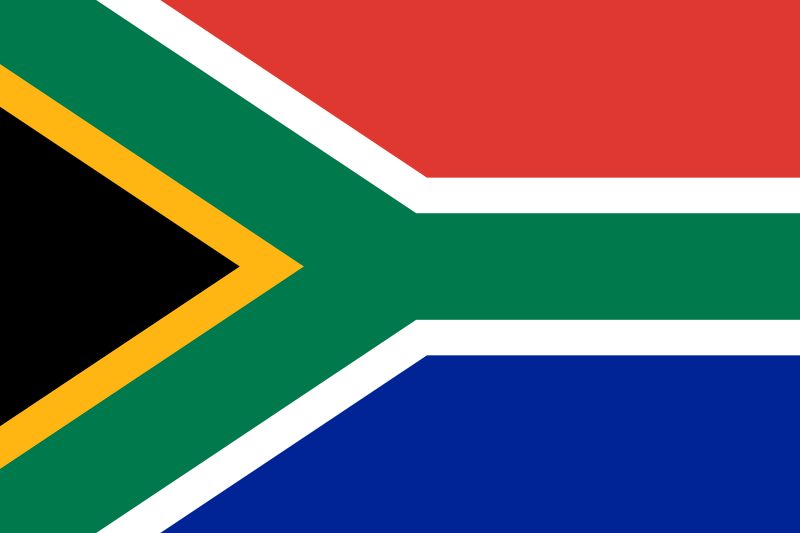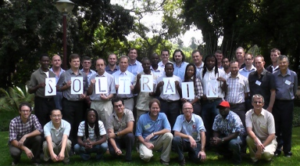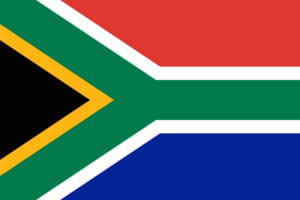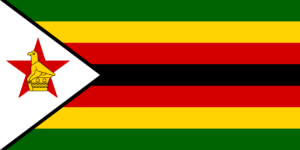Southern Africa: SOLTRAIN’s Demonstration Systems Achieve up to 800 kWh/m²a
February 28, 2013
The Austrian Development Agency (ADA) has agreed to sponsor also the second phase of the successful Southern African Solar Thermal Training and Demonstration Initiative (SOLTRAIN). At the beginning of December, the project partners from Austria, Mozambique, Namibia, South Africa and Zimbabwe met to thrash out precisely how to implement SOLTRAIN 2. The aim of the project is to support the African partner countries when they change from a largely fossil energy supply system to a sustainable supply structure based on renewable energy in general and on solar thermal in particular. The picture shows a test facility at the Stellenbosch University in South Africa. The facility was established in phase 1 of the project to support local manufacturers in growing their business and improving their solar thermal technology.
“I believe the first phase of SOLTRAIN was a tremendous success, which more than achieved its targets,” says Dieter Holm, Project Coordinator for Southern Africa. “I think what has made the project so successful was the experience and management style of our Austrian project leader, Werner Weiss from AEE INTEC, as well as the exceptional commitment of our local partner team. Hence, I look forward to SOLTRAIN 2, which will not only consolidate the work that has already been done, but will contribute significantly to the transformation of the energy scene in South Africa and in southern Africa towards sustainability solutions.”
SOLTRAIN 2 will focus on the following four areas:
Campaigns to raise awareness: By using targeted campaigns, all relevant stakeholders and the public can be made aware of the wide range of application areas for solar thermal systems. Awareness-raising should also include showing the benefits of solar thermal systems concerning energy supply, poverty alleviation, job creation and the environment.
Centres of competence: Currently, there are no centres of competence for solar thermal in the partner countries. The project will help establish institutional structures which can offer expert advice, training and technical support to the local industry and politicians. Research and development capacities will also be part of these centres, which will be set up in universities, colleges and the Sustainable Energy Society of Southern Africa (SESSA). The competence centres are thought to conduct extensive training programmes, ranging from installation courses to university master courses. Current planning includes a total of 33 training courses in the four participating countries.
National and regional Solar Thermal Technology Platforms (STTPs): One of the major project components is the creation of national STTPs in each of the participating countries similar to the European Commission’s technology platforms. These platforms will include all key stakeholders and sectors that influence the general conditions of how to accelerate the dissemination and use of solar thermal systems. In addition to the national STTPs, there are also plans to cooperate across borders in the framework of a regional technology platform. The latter idea is thought to improve information exchange and cooperation between the national platforms. Through a stakeholder process, the national technology platforms will develop roadmaps and implementation plans for solar thermal based on the different circumstances in each country.
Demonstration plants: Another aim of SOLTRAIN 2 is to set up forty to fifty solar thermal demonstration plants in order to apply the knowledge taught in the training programmes to installers, students and politicians. Both smaller and bigger plants will be set up in social institutions and small and medium enterprises, at which they will contribute to water heating, cooling and the generation of process heat.
The ADA had already co-sponsored more than 50 solar thermal system projects for training course members during the first phase of SOLTRAIN. “By the end of phase 1, this had resulted in the construction of 60 demonstration plants with a total collector area of 668 m²,” says Project Leader Werner Weiss from AEE INTEC. According to Weiss, the systems ranged from small thermosiphon systems with only 2 m² (1.4 kWth) to big pumped systems with 192 m² of collector area (134 kWth). Forty-eight of these systems were installed at social institutions in South Africa, seven in Zimbabwe, three in Namibia and two in Mozambique.
Seven systems (six flat plate collector and one vacuum tube collector installation) had also been equipped with measuring instruments and were monitored for at least twelve months (see the table below).
| System | System design | Collector area (m²) | Storage volume (m³) | Specific yearly collector yield (kWh/m²a) |
| 1 | Indirect thermosiphon system | 4 | 300 | 800 |
| 2 | Direct thermosiphon system | 3 | 200 | 723 |
| 3 | Pumped system | 160 | 30 000 | 451 |
| 4 | Pumped system | 72 | 6 400 | 769 |
| 5 | Indirect thermosiphon system | 4 | 300 | 763 |
| 6 | Pumped system | 99 | 8 000 | 302 |
| 7 | Direct thermosiphon system | 8 | 400 | 363 |
Source: AEE INTEC
The specific annual collector yield was between 302 kWh/m²a for a 99 m² pumped system with an 8000 litre storage tank and 800 kWh/m²a for an indirect thermosiphon system with 4 m² of collector area and a 300 litre storage tank.
Contact:
dieterholm@worldonline.co.za
More information:
http://www.soltrain.co.za
http://www.aee-intec.at


